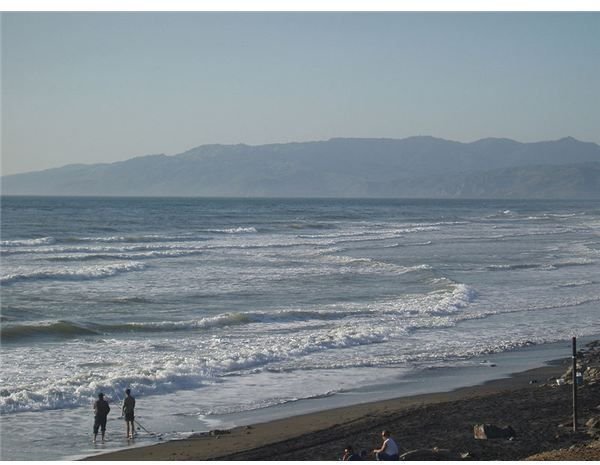Understanding the Fauna of the Pacific Ocean
The Wet Wonder of the Pacific
The Pacific is the world’s largest ocean. All of the land masses could fit in the Pacific with enough room left over to fit in three other oceans as well. Spreading halfway around the world, it covers 48 percent of the world’s water. Known as the deepest of oceans, the highest peak, Mount Everest, could be placed in the Pacific’s Philippine Trench and would completely disappear. The Philippine Trench is 32,995 feet deep.
When examining the fascinating marine life of the Pacific, we find many species. There have been new species recently recorded, as technology, warming trends and earth changes take place. From algae to whales, the environment of the world beneath the surface of the ocean relies on several components as to what will survive in the waters of the Pacific.
An understanding of the fauna of this great ocean can also be achieved by studying its currents and tidal patterns. The surface currents follow the winds that move west in the northern hemisphere and whisk the surface eastwardly in the southern hemisphere. A westward flow of currents is found in the more temperate southern region of the Pacific.
Some marine animals travel between the oceans, with the assistance of these currents. The currents also accommodate regional elements that host a numerous amount of marine life. Plankton, fish, birds and mammals find solace in the regional environment due to the currents.
Cool and warm water currents affect the life in the ocean as well. Weather changes create optimal environmental components, as well as adverse ones. Through the movement of trade winds, warmer surface water pushes its way to Southeast Asia; colder water will take its place. This hosts nutrients that can feed the surface-feeding plankton. Zooplankton thrive during this time and become meals for fish and other life.
The trade wind is known to ease up every few years, which brings water from the eastern section of the Pacific and moves it to the South American shoreline. When this occurs, the nutrients move in more slowly or don’t produce as they normally do, which removes the food chain elements that give marine life in the Pacific its life-saving components. This process can cause migration of fauna to better feeding grounds or death in some cases.
Plankton and Algae
Starting at the base of the food chain, plankton is found in the first slot. Plants of this species are known as phytoplankton and animals in

this category are known as zooplankton. Plankton float around the ocean waters, normally found as the start of algae. Zooplankton is the beginning stages of developing into fauna like mussels, crabs, snails and other sea lifeforms. The phytoplankton species lives near the surface to give it the light requirements it needs for survival. Zoopankton, on the other hand, exists far beneath the surface.
The photosynthesis process produces food for animals through marine algae, also known as seaweed. The seaweed plants produce food for animals farther up on the food chain.
Invertebrates and Vertebrates
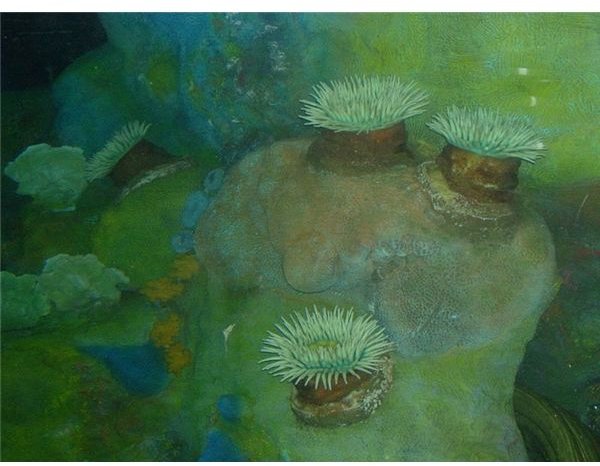
Forms of marine life known as invertebrates and vertebrates exist in the Pacific along with the bottom species of the food chain. Corals boast beautiful bright colors, seen under the shallow spaces of the Pacific. Jellyfish can be spotted floating along under the surface to the deeper waters. The floating “arms” of the anemones can be found in tide pools and in deeper parts of the Pacific, enticing ocean fish and other food sources with their flowery spikes. Marine worms, comb jellies, and starfish survive in these waters as well. Mollusks such as clams, octopi and their relatives exist throughout the watery environment. The vertebrate category includes life such as sea squirts, fish species and reptiles.
Schools of FIsh Varieties
Fish species of the Pacific Ocean fill in the food chain for larger creatures and are coveted by the fishing industry. Lampreys and hagfishes
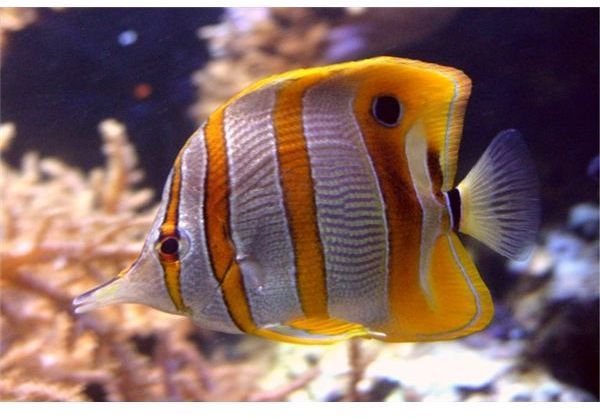
are also known as a species of eel by the layman due to the long, snake-like body, however they are included in the fish category. The lamprey, also known as the “jawless fish”, lie within the hidden confines of the sandy bottom of the ocean or hide out in the arms of anemones.
The hagfish is an eel-like creature that is known for the missing spinal column, but has a skull. This species can be found resting on the bottom of the ocean floor, in depths of all levels. The Pacific hagfish is commonly spotted off the Pacific Northwest coastline. The hagfish and lamprey fish are categorized as an ancient species.
There are over 1,000 species of sharks, rays and chimeras, which includes the largest fish in the world recognized as the whale shark. The massive manta ray is also located in the Pacific. Chimeras are included as one of the deeper sea creatures.
The eel, herring and catfish fall into the category of bony fishes. Over 10,000 of the 13,000 spiny-rayed fish live in the Pacific environment. The spiny-rayed fish species includes creatures such as the tuna, mullets, perch and smelts. The name, “spiny-rayed” comes from the spines located in the fins of these fish.
The Pacific is also known as a common ground for such fish as the bay pipefish, lingcod, chum salmon, Coho salmon and sockeye salmon. Pacific herring, sand lance, and basking shark are traditionally located in the mix.
Reptile Mania
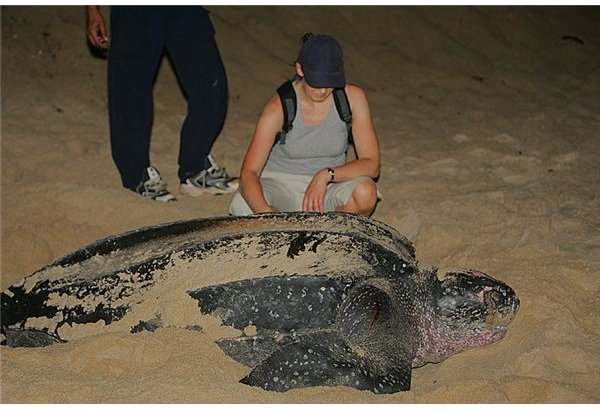
This beautiful ocean is home to reptiles as well as the fish, mammal and algae species. There are over 8 species of turtles, numerous sea snakes, marine iguana and saltwater crocodiles. The reptiles are found in the warmer temperatures of southern temperate ocean environments.
The Pacific leatherback sea turtle is the sole member of the family Dermochelyidae that was in existence over 100 million years ago. The leatherback is the largest marine turtle that has also been spotted in all of the oceans around the world. The younger of the species tends to desire the warmer climates of tropical locations, while the adults head for cooler temperatures where plenty of food is readily available.
Magnificent Mammals
The Pacific Ocean is home to at least 37 species of marine mammals. Hawaiian monk seals live mostly in the Northwestern Hawaiian
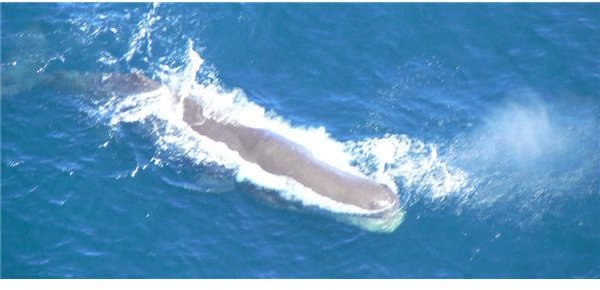
Islands. Six reproductive populations thrive at French Frigate Shoals, Laysan Island, Lisianski Island, Pearl and Hermes Reef, Midway Atoll and Kure Atoll. Some of the populations are housed at Necker Island and Nihoa Island but are limited in reproduction and migrate to other areas.
The California sea lion, harbor seal, northern elephant seal, Guadalupe fur seal, Northern fur seal and the Hawaiian monk seal populate the shores from California to the Oregon and Washington coast, and from Mexico to Hawaii.
Harbor porpoise and Dall’s porpoise stick to the cooler waters of the California, Washington and Oregon coastlines. In related species, certain dolphin can also be found in these waters. The Pacific white-sided dolphin, Risso’s dolphin, the bottlenose dolphin, striped dolphin, common long and short-beaked dolphins and the Northern right whale dolphin all reside through California, Oregon and Washington waters as well.
The cooler waters of these states are also the perfect grounds for many whale species. Throughout them you can find killer whales, pilot short-finned whales, Baird’s beaked whale, Mesoplodont beaked whales, pygmy sperm whale, dwarf sperm whale, sperm whale, and the fin whale. The blue whale is attracted to a bit warmer temperatures as in the waters of California and Mexico.
Heading into warmer tropical waters of the eastern tropical and eastern north Pacific, Bryde’s whales and the Sei whale species spout happily, juxtaposed the minke whale which are in the cooler waters of the Pacific northwest region as the sperm whale, dwarf sperm whale and others.
Moving toward Hawaiian waters, the rough-toothed dolphin, Risso’s dolphin, bottlenose dolphin, pantropical spotted, spinner, and striped dolphin species enjoy the warm blue Pacific. The melon-headed whale, pygmy killer whale, false killer whale, killer whale, pilot whale, Blainville’s beaked whale, Cuvier’s beaked whale, pygmy sperm whale, dwarf sperm whale, and the sperm whale thrive in these waters as well.
Types of Sea Birds Near the Pacific
Birds congregate around the Pacific Ocean waters because of the supply of food the seawaters provide. Within the Pacific region, three types of fauna are commonly spotted like the albatrosses, shearwaters and other seabird species.
Under the title Albatrosses, there are three traditionally seen birds. The black-footed albatross, the Laysan albatross and the short-tailed albatross. This family of birds breed mostly in the northwestern Hawaiian Islands, however, about 4 percent breed on the outlying islands of Japan. These birds remain mostly over the north part of the Pacific Ocean, but a few have been seen thriving over the waters of the southern hemisphere too.
The Laysan albatross nesting sites remain in the Northwestern Hawaiian Islands. With approximately 2.4 million in population numbers, the Laysan is a commonly seen bird in this area.
The short-tailed albatross breeds mostly on the Japanese island of Toroshima, although sightings of nesting attempts have been recorded at Midway Island in the northwest section of the Hawaiian Islands. Rare sightings are recorded in the Laysan Island, Kure Atoll, French Frigate Shoals and Pearl and Hermes Reef areas also.
The Shearwater category of seabird is listed under the Christmas shearwater, short-tailed shearwater, sooty shearwater and wedge-tailed shearwater varieties. The shearwater species of sea fowl apparently flock to warmer climates, as they hang out on the Hawaiian Leeward Chain, Marshall Islands, Line Islands, Phoenix Islands and the Easter Island pieces of land, but during colder months can be seen migrating to the warmer climates as found in the northwestern part of the Pacific where winters are milder.
The wedge-tailed shearwater is the most commonly found shearwater bird found in warm waters. In the U.S. Pacific water, they breed in the Hawaii archipelago, from the Kure Atoll to Johnston Atoll. The bird is mostly sedentary.
This ocean hosts other varieties of fowl including: the masked booby, red-footed booby, and the brown booby, the great frigate bird, the lesser frigate bird, the brown noddy, black noddy and lesser noddy, bonin petrel, black tern, gray-backed tern, sooty tern, white tern, the red-tailed tropicbird and the white-tailed tropic bird.
Fauna Survival
Climate changes are in part responsible for changes in the fauna of the Pacific Ocean. A few of the marine species will suffer although
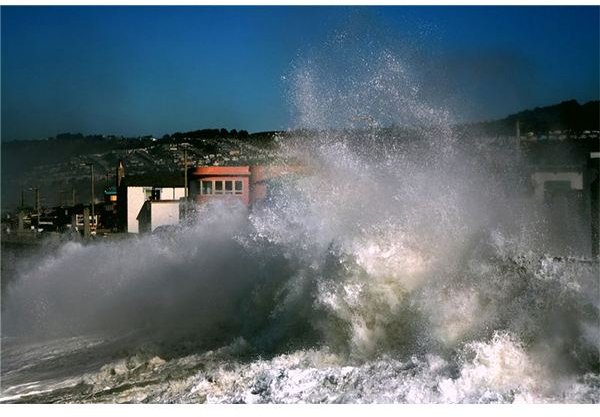
some will adapt to the new changes. Studies indicate that certain fish and whales have begun to successfully adapt already.
Gray whales feed both at the bottom levels of the ocean and on the surface. This allows the whale to feed during times of glacial periods and scarcity in food sources at one level or the other. The feeding pattern has been studied through whale population and food supply for 120,000 years. According to research, whales have adapted to varied climate changes that affect food supply throughout the years. Due to this, it seems whales can readily adapt in the future as well in terms of climate challenges.
It seems in another study, that certain fish species are capable of adapting as well. The fish tend to move to another region, usually farther north to cooler waters to locate a new food source. As the adaption process takes place, will this lead to new species creation or worse, the loss of many species, guiding them to extinction?
With elemental changes to the environment, fauna of the Pacific Ocean and other oceans are risking the loss of many species. Pollution, weather and other factors may lend a hand in the destruction and upset of the delicate balance of what is one of the most beautiful ecological sites in the world.
Sources
Author Unknown, Pacific Wildlife Foundation, “The Pacific Ocean”: https://www.pwlf.org/pacific.htm
Pyper, Julia, Scientific American, “Whales and Fish Adapt to Climate-Induced Changes in the Pacific Ocean”: https://www.scientificamerican.com/article.cfm?id=whales-fish-adapt-climate-induced-changes
Roach, John, National Geographic News, “Life is Found Thriving at Ocean’s Deepest Point”; https://news.nationalgeographic.com/news/2005/02/0203_050203_deepest.html
Author Unknown, NMFS, Southwest Fisheries Science Center, “Marine Mammals of the Pacific Region and Hawaii”; https://spo.nwr.noaa.gov/unit23.pdf
Author Unknown, Western Pacific Regional Fishery Management Council, “Sea Birds”; https://www.wpcouncil.org/protected/species_birds.html#albatross
Images
Marlith, “Two people on the shore of the Pacific Ocean”, attribution Marlith under GNU Free Documentation License
Kils, Uwe, “Planctonic polychaete worm from genus Tomopteris”, attribution Uwe Kils under GNU Free Documentation License
Maniacuhockey, “Anemone”, attribution Maniacuhockey under CC BY-SA 3.0
Buglia, Juliana, “Copperband Butterfly Fish”; attribution Juliana Buglia under CC BY-SA 2.0
Garvie, Steve, “Marian sits beside this massive female Leatherback to demonstrate it’s size. The turtle was radio-tagged after laying (image taken on Matura beach, Trinidad)”; attribution Steve Garvie under CC BY-SA 2.0
Cianc, “Sperm whale from above”, attribution Cianc under CC BY-SA 2.0
Zinkova, Mila, “Storm in Pacifica, California”; attribution Mila Zinkova under GNU Free Documentation License
